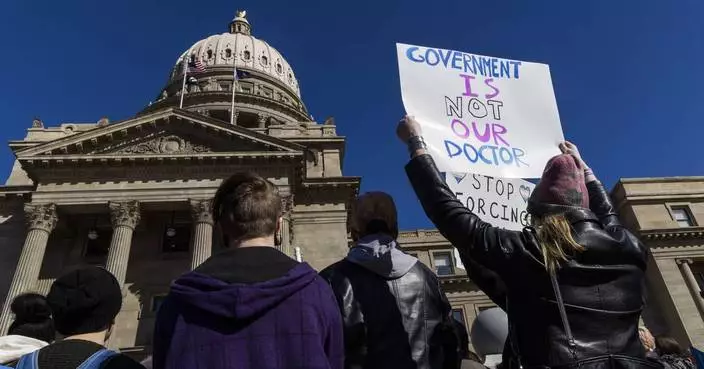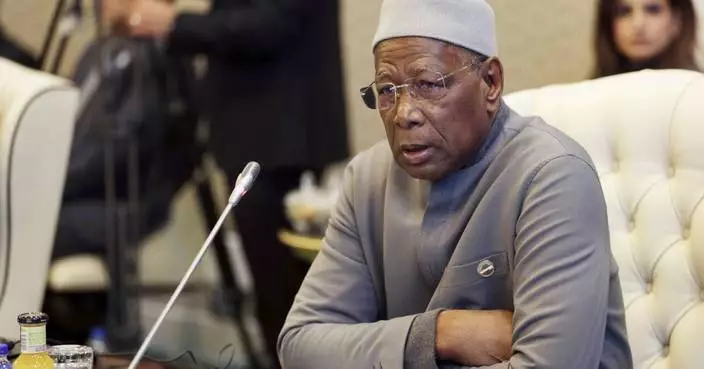Just days after declaring a “final,” decisive battle for the capital Tripoli, heavy fighting raged over a 24-hour period between rebel Libyan commander Khalifa Hifter and an array of militias loosely allied with the U.N.-supported government based there, officials said Saturday.
The fresh bout of fighting comes after Hifter, the leader of the self-styled Libyan National Army, declared Thursday that the “zero hour” of the battle for Tripoli had begun, nearly eight months since he began his offensive to take the city.
Mercenary fighters on both sides played a crucial role in the most recent offensive.
The LNA media office shared footage of reinforcements arriving in Tripoli, including ground troops and armored vehicles, and of clashes in the southern areas. It said Hifter's forces took control of al-Tawghaar town, just south of the city. However, Tripoli-based forces disputed the claim.
The fighting has threatened to plunge Libya into another bout of violence rivaling the scale of the 2011 conflict that ousted and later killed longtime dictator Moammar Gadhafi. In the chaos that followed, the country was divided, with a weak U.N.-supported administration in Tripoli and a rival government in the east aligned with the LNA.
Spokesman Ahmed al-Mesmari said the LNA also launched airstrikes overnight against an air base at the Air Force Academy in the western city of Misrata, targeting military warehouses allegedly housing Turkish-made drones used by Tripoli-allied militias.
Misrata, in western Libya, is the country's second largest city and is home to fierce militias who oppose Hifter and have been critical in defending Tripoli.
The LNA’s media office also said it shot down a Turkish-made drone over the town of Ain Zara, just south of the capital. Hifter forces captured a major military camp from the Tripoli-allied militias and clashes were continuing around the camp, officials from both sides said.
There was heavy fighting elsewhere around Tripoli in the new push by Hifter's forces. Officials on both sides called this offensive “different” from previous ones in the past eight months.
“It is a matter of days, and we will root out this corrupt and treacherous government," an official within the LNA said. H e spoke on condition of anonymity because he was not authorized to brief reporters.
Since his troops marched toward Tripoli in April, Hifter has only been able to lay siege to the city, failing to claim it from the government of Prime Minister Fayez al-Sarraj. In past months, the battle lines have changed very little, with both sides dug in and shelling one another in the southern reaches of the capital. They have also sought support from their regional and international backers.
U.N. experts saidin a 376-page report to the U.N. Security Council earlier this week that Jordan, Turkey and the United Arab Emirates are supporting the warring sides of Libya’s war, and have “routinely and sometimes blatantly supplied weapons, with little effort to disguise the source” in violation of a U.N. arms embargo.
Hifter is backed by the United Arab Emirates and Egypt, as well as France and Russia, while the Tripoli-based government receives aid from Turkey, Qatar and Italy.
“The Russian mercenaries are leading the battle (for Hifter's forces) this time. There are hundreds of mercenaries on the front lines,” an official at the Tripoli-based government said. “But we will fight and beat them.” He also spoke anonymously.
Libyan and U.S. officials had accused Russia of deploying fighters through a private security contractor, the Wagner Group, to key battleground areas in Libya in the past months. The Government of National Accord has documented between 600 and 800 Russian fighters in Libya fighting with Hifter forces.
“The Russian fighters’ toughness, lethal techniques and coordination discipline have instilled fear in the anti-Hifter forces,” said Jalel Harchaoui, a Libya expert at The Netherlands Institute of International Relations. “Now, Hifter and all foreign states backing him have become dramatically more confident that Hifter's brigades will enter Tripoli within the foreseeable future.”
The report also said the presence of the Chadian and Sudanese fighters “has become more marked” in 2019, posing “a direct threat” to the security and stability to Libya.
On Thursday, Hifter declared a final, “decisive battle” to take Tripoli, saying that “the zero hour has ticked.”
The new push by Hifter came after Sarraj’s government signed a security arrangement and maritime deal with Turkey last month.
The maritime deal would give Turkey access to an economic zone across the Mediterranean, over the objections of Greece, Egypt and Cyprus. All three have blasted the accord as being contrary to international law. The deal has added tension to Turkey’s ongoing dispute with Greece, Cyprus and Egypt over oil and gas drilling rights in the eastern Mediterranean.





